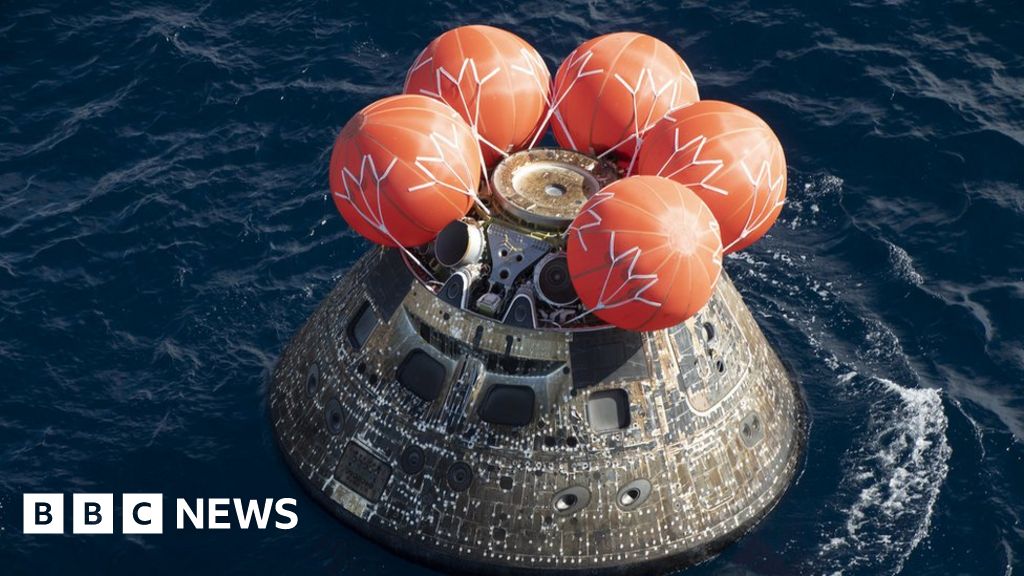Artemis I – Flight Day 26: Orion splashes down, concluding historic Artemis I mission
NASA’s Orion spacecraft successfully completed a parachute-assisted splashdown in the Pacific Ocean at 9:40 PST, 12:40 EST as the final major milestone of the Artemis I mission. Engineers will perform several additional tests while Orion is in the water and before powering down the spacecraft and handing it over to the recovery team aboard the USS Portland.
At the direction of the NASA recovery director, Navy divers and other team members in several inflatable boats will approach the spacecraft. When Orion is ready to be pulled into the ship’s well deck at the waterline, the divers will attach a cable, called the winch line, to pull the spacecraft into the ship and up to four additional tending lines to attach points on the crew module. The winch will pull Orion into a specially designed cradle inside the ship’s well deck and the other lines will control the motion of the spacecraft. Once Orion is positioned above the cradle assembly, technicians will drain the well deck and secure it on the cradle.
Once aboard the vessel, teams will take the spacecraft to U.S. Naval Base San Diego and soon return it to NASA’s Kennedy Space Center for inspection. Technicians in Florida will thoroughly inspect Orion, retrieving data recorded on board, removing onboard payloads, and more.
Artemis I was the first integrated test of NASA’s deep space exploration systems – the Orion spacecraft, SLS rocket, and the supporting ground systems – and the first in a series of increasingly complex missions at the Moon. Through Artemis missions, NASA will establish a long-term lunar presence for scientific discovery and prepare for human missions to Mars.
NASA will host a post-splashdown news conference is targeted for 3:30 p.m. EST
Participants include:
Bill Nelson, NASA administrator
Jim Free, NASA associate administrator for the Exploration System Development Mission Directorate, NASA Headquarters
Vanessa Wyche, director, Johnson
Janet Petro, director, Kennedy
Mike Sarafin, mission manager, NASA Headquarters
Howard Hu, Orion Program manager, Johnson
Emily Nelson, chief flight director, Johnson
Melissa Jones, recovery director, Kennedy
Author cballart
Posted on De




